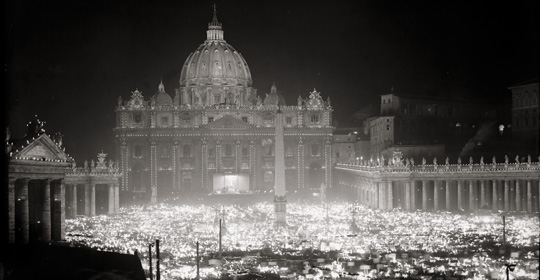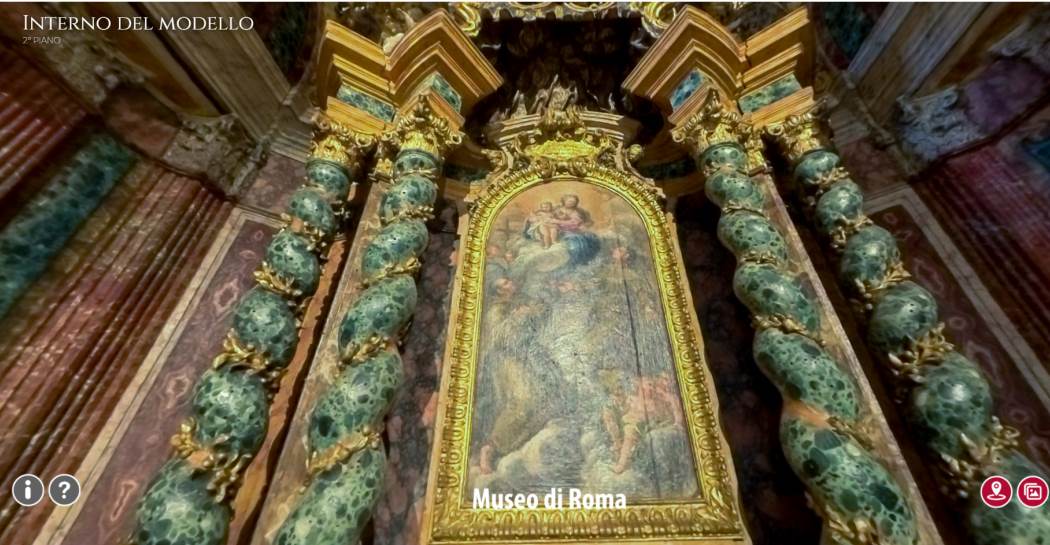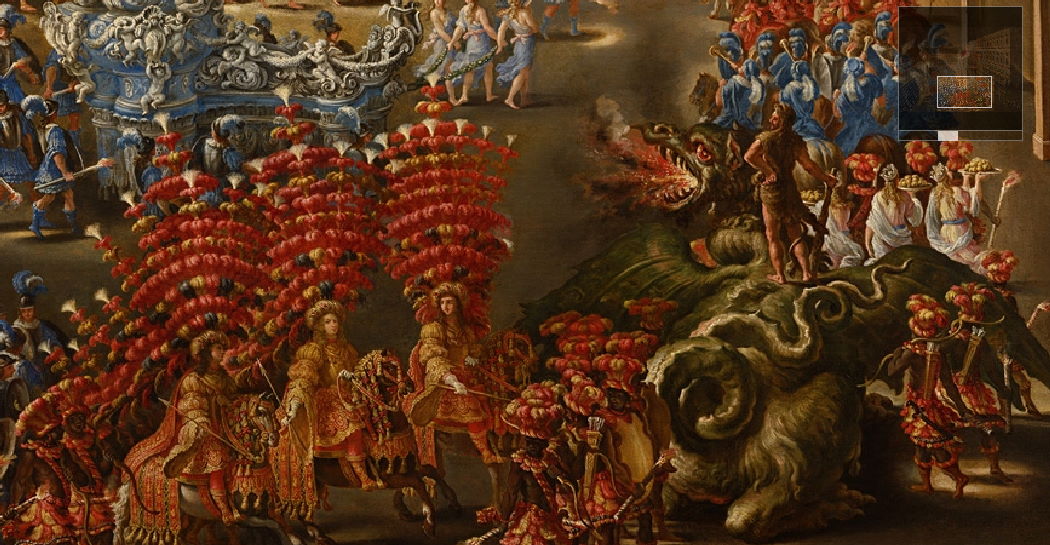St. Peter’s: Photographs from 1850 to the present

The exhibition to mark the 500 years since the building of St. Peter’s Basilica first began will set out a chronological record of views of the Patriarchal Basilica as captured through the lens of a camera.
A selection of ninety, extraordinary, large and very large prints from the City’s vast Photographic Archives, preserved in the Museum of Rome, together with a limited number of contemporary photographs from the archives of the renowned Magnum Photos agency, will be displayed in the exhibition rooms of Palazzo Braschi. Together they will provide an evocative journey through time, during which the magnificence of the Basilica can be seen against the changing backdrop of the Eternal City itself.
The use of early, experimental photographs from the first half of the 18th century, not unlike a painting or engraving in appearance, through to agency photos that illustrated news stories, means that the exhibition will also be a tribute to the work of some of the most highly regarded photographers of today including Gianni Berengo-Gardin, Mario Cresci, David Seymour and Leonard Freed, as well as Mangum Photos own Mimmo Jodice and Martin Parr.
The exhibition will be rounded off with extremely rare shots taken by the most famous photographers working in Rome during the 18th century; Caneva, Eugène Costant, Alfred-Nicolas Normand, Tommaso Cuccioni, Robert Eaton, Robert MacPherson, Gustavo Eugenio Chauffourier, James Anderson, Antonio D’Alessandri and his brother, Paolo Francesco.
The beauty and majesty of the Basilica, Christianity’s most important place of worship, emerges from the scenes depicting important ceremonies of the 20th century and from shots that focus only on that grandiose architectural complex in the Vatican known as St. Peter’s. The harmonious and graceful outline of Michelangelo’s Dome has drawn the eyes of pilgrims arriving in Rome for some 500 years, and is a much-loved and reassuring vision to Roman residents who take the sight of it for granted. A monument and a symbol, a treasure chest filled with every precious item imaginable, located in a prime and dominant position, St. Peter’s has been captured millions of times on film.
What is most striking about the city’s horizon, characterized by the Basilica’s dome, is the infinite number of viewpoints it offers and that have supplied and enriched the artistic heritage for centuries. The photographs on display are the result of a rigorous selection process based on strict historic and artistic criteria, and thanks to the expert and dynamic eyes of those responsible for such precious, visual records, visitors will have an opportunity to enjoy a truly unique exhibition of rarely seen photographs.
Some shots, those that typify their genre, embody the same sort of poetry that characterized 19th century paintings; scenes of the Tiber between Castel Sant’Angelo and the Vatican, the boatmen and fishermen who were the life and soul of the river and of Borgo, the ancient district that encompasses the area between the castle and St. Peter’s Square, once filled with buildings jostling for what little space was available.
The building of via della Conciliazione meant that much of Borgo, at the time one of the most densely populated districts of Rome, had to be demolished. Pictures taken after 1950 provide a clear evidence of the cultural and urban changes that took place. But, the bottom line is that St. Peter’s and Rome itself are made up of a never-ending ensemble of places, situations and descriptions: the Basilica itself, the Vatican gardens, Borgo’s “passetto” (walkway), the leonine walls, Castel Sant’Angelo and everything in between.
Since 1853, the images of St. Peter’s Square have just kept on coming; the historic and festive events that it has hosted; Holy Years, Papal elections, religious ceremonies and visiting dignitaries have all been recorded for posterity, right through to the last, touching scenes of the vigil held for Pope John Paul II and his funeral
Walking through the exhibition also provides the opportunity to appreciate just how far photographic techniques have come, from salted prints, the earliest of all, those made using the albumen process, medium and large-sized bromoil prints right through to today’s most avant-garde methods.
Towards the end of the exhibition route, special viewers are available that render the small sized pictures provided with them into three-dimensional images. By being able to view two identical images at once, there is a particular perception of space that tricks the eye into believing it is seeing only one photograph except it no longer appears to be flat or one-dimensional.
With the exception of the dozen or so pictures on loan from Magnum Photos, all the exhibits have been pulled from their safe-house in the bowels of the Museum of Rome – City Photographic Archives that are home to the most important collection of photographs of Rome taken between 1845 and the end of the century, as well as a modern section dedicated to the urban landscape of the Eternal City throughout the 20th century.
Although the museum already owns around twenty-five thousand prints and fifty thousand negatives (on glass plates and film), a project that has been underway for many years aims to increase that number and bring together and preserve as many photographs as possible creating, in so doing, a history of photography too. The same museum also has prints from the 19th and 20th centuries as well as collections accrued by academics Silvio Negro and Valerio Cianfarini and the photographer, Gustavo Eugenio Chauffourier.
Information
Tuesday-sunday 9.00am - 7.00pm
ticket office closes half an hour before closing time.
Ordinary € 8,00
Reduced € 6,00
Tickets and reservations
060608 every day 9.00am - 10.30pm














































